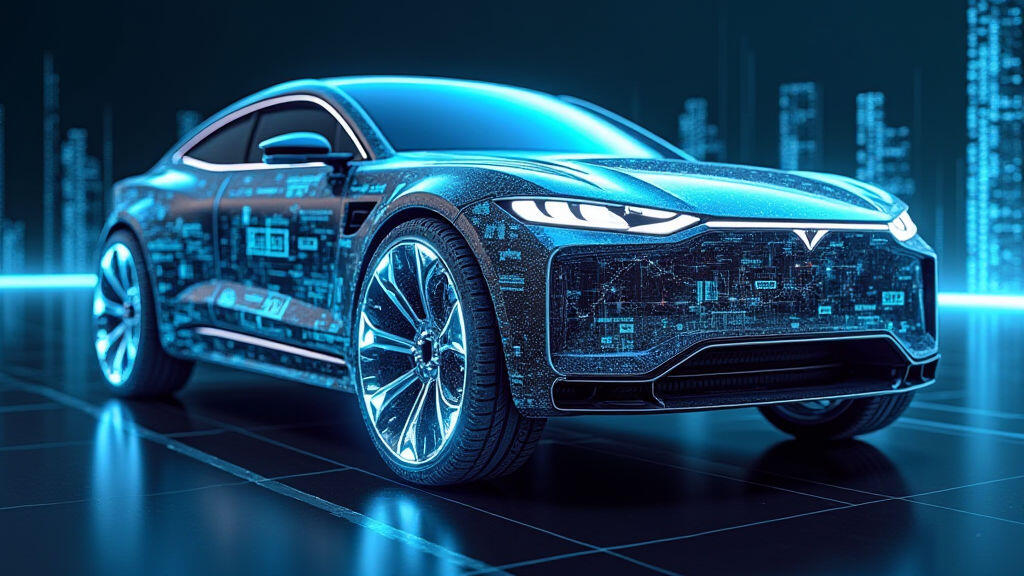Anjing Road, Xiaolan, Zhongshan, Guangdong, China
info@mes-drive.com
08.00 AM-09.00 PM

Ever since President Biden announced his new $200 billion EV and battery revitalization plan, headlines across the globe have been buzzing with “charging up the nation.” The push for electric vehicles (EVs) has dominated the news, from Tesla’s State‑of‑The‑Union acceptance speeches to the opening of the first U.S. gigafactory in Ohio. In the midst of this whirlwind of renewable‑energy optimism, a quieter yet vital component is coming into the spotlight: the gear motor (reducer motor).

Gear motors—small, highly efficient electric motors coupled with a reduction gearbox—are the unsung heroes that translate electric energy into precise motion.
In an EV, the motor spins electrons at high speed, but the wheels need lower speed and higher torque. A gear motor accomplishes this conversion in one compact unit, saving both weight and space compared with separate motor and gearbox assemblies.
Today’s EV manufacturers are under relentless pressure to squeeze more power out of less volume. The new generation of battery packs releases more energy per kWh, enabling higher powered motors that spin faster. That escalation is making the need for highly efficient reducers even more critical:
When a Nasdaq‑listed EV firm just rolled out its new flagship, journalists were telling a story framed by “more power, higher torque, longer range”—and beneath that headline, the gear motor was quietly doing the heavy lifting.
The infrastructure bill is already spurring construction of new gigafactories worldwide. That wave of investment is accompanied by reports of an 8% projected growth in the electric drivetrain component market over the next five years—a trend that translates directly into higher revenue prospects for gear motor suppliers.
For a company that produces reducer motors, the EV boom is akin to a golden ladder:
| Market Segment | Expected 2025 Increase | Gear Motor Relevance | |----------------|------------------------|-----------------------| | Battery‑electric cars | +12% | Higher torque demands; compact design | | HOV and autonomous shuttles | +9% | Precise speed control for smooth passenger experience | | Commercial electric trucks | +15% | Robust heat management; long‑life reliability |
Each of these segments is looking for motors that can deliver power density—more watts per gram—without sacrificing durability. Gear motors are stepping up, thanks to new materials such as silicon carbide for stator windings and high‑strength composite gear housings.
The news cycle around autonomous vehicle deployments—especially the recent announcement by a major ride‑share company to field a fully autonomous fleet in Phoenix—has spotlighted the importance of repeatable, low‑maintenance traction control. Developers are turning to gear motors for their innate ability to provide accurate torque modulation, which reduces wear on brakes and extends vehicle life.
To meet the pressing needs of the EV ecosystem, gear motor manufacturers are introducing a handful of game‑changing innovations:
Hybrid Gearbox Design
Instead of a single reduction stage, some motors now integrate a dual‑stage gearbox, optimizing performance across a wide speed range. This approach reduces vibration and increases the lifespan of the output shaft—an essential factor for autonomous shuttles that run 24/7.
High‑Temperature Operability
EV powertrains generate substantial heat. New aluminum alloy housings coupled with advanced thermal paste enable gear motors to operate reliably at temperatures up to 150 °C, keeping the motor efficient without constant cooling.
Wireless Power Transfer (WPT) Compatibility
The recent pilot program in Singapore to deliver “dynamic charging” for EVs would demand motors that can adjust torque instantaneously as a vehicle’s battery receives off‑road replenishment. Gear motors with adaptive micro‑controllers can meet this requirement, preparing for a future where “plug‐in” is optional.
These innovations are not just hype. A leading supplier’s Q2 earnings call highlighted a 30% rise in orders from a major automaker for a new “gearmotor‑X” that scores 15% higher efficiency than traditional models—an improvement that will soon translate into longer ranges for end‑users.
Despite the upside, gear motors must still win over skeptics who question reliability in rugged commercial environments. The mining and energy sectors push motor life tests beyond 10 million operating hours, and the industry’s response is to adopt improved bearing technologies and lubricants that resist oil‑sliding failure.
Furthermore, geopolitical tensions around rare‑earth sourcing (a key ingredient in motor magnets) are sharpening. Companies are researching permanent‑magnetless (PM‑less) motors that avoid critical supply risks, and new gear motor designs that employ copper‑less rotary flux control are gaining traction.
Still, the consensus is clear: as EV adoption accelerates, gear motor technology will evolve, offering higher efficiency, durability, and flexibility. The gear motor is contracted to become an “AI‑friendly” component; its control surface will receive AI‑driven predictive maintenance feeds, reducing downtime across fleets.

The recent surge in electric‑vehicle enthusiasm, drummed up by headline‑making political pledges and corporate milestones, is reshaping the entire automotive supply chain. Gear motors—though quietly nestled in the inner workings of a car—are at the heart of this transformation.
They convert short‑range, high‑speed electric energy into the long‑duration, high‑torque motion we need on our roads. By embracing advanced materials, smart controls, and design optimization, gear motor manufacturers are ensuring that their products not only keep pace with but accelerate the EV revolution.
If the overarching narrative of this decade is about moving from fossil fuel to sustainable technology, then the gear motor is a modest yet indispensable champion in that journey—pushing the world forward, one revolution at a time.
Authored by TechTrend Weekly, October 16, 2025 - Contributions from industry analysts and engineer‑writers.Markup/>
Leave A Reply
Your email address will not be published. Required fiels are marked